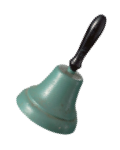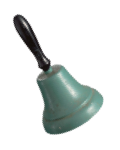Ang Ku Kueh, which translates to “Red Tortoise Cake” in Hokkien, is a small oval-shaped Chinese treat consisting of a soft, sticky glutinous rice flour skin wrapped with a filling that is usually sweet. Its distinctive design that resembles a tortoise shell sets it apart from other treats. The kueh traces its history from southern Fujian, China – in Xiamen, Quanzhou and Zhangzhou, before making its way along migration routes across maritime Southeast Asia. Although Ang Ku Kueh remains popular today as a tea-time snack, its significance in Chinese religious and cultural traditions is often overlooked.
In ancient China, tortoises were believed to be used as sacrifices to Chinese deities in seeking good fortune and longevity. However, as live tortoises were not easily sourced, turtle-shaped offerings were gradually developed as alternatives. As the name suggests, Ang Ku Kuehs are traditionally red in colour and have a chewy texture when eaten. In Chinese culture, the colour red here symbolises joy and happiness, while the tortoise shape signifies longevity, auspiciousness, wealth, and completeness.
From then on, Ang Ku Kuehs became an important kueh for offering on many occasions such as Chinese New Year, birthday of the Jade Emperor and in the celebrations of many other Chinese deities. By offering Ang Ku Kueh on ritual altars, devotees hope that the sweetness of the kueh will sweeten the mouths of the deities so that they will speak positively about the devotee in front of the Jade Emperor. During these religious festivals, Ang Ku Kuehs are usually bought in sets of 12 as it is considered auspicious. Another specially shaped Ang Ku Kueh that is offered on altar tables is the Money Kueh (钱糕), which is moulded from a design that depicts a string of copper coins.
According to Kelvin Toh, the second-generation owner of Ji Xiang Confectionery, the different coloured kuehs indicate the different kinds of fillings. In the 1980s, Ji Xiang expanded its assortment of fillings as tastes diversified. Although there were many colours to choose from, red-coloured Ang Ku Kuehs of mung bean fillings are the traditional option in preparing for these occasions. In a year, the three busiest periods for Ji Xiang are the Jade Emperor’s birthday, Qing Ming Festival week, and the Hungry Ghost Festival month. On these important dates, only red-coloured Ang Ku Kuehs are made to speed up the process and meet demands.
In addition to being religious offerings, Ang Ku Kuehs are also used in commemorating a newborn’s first month or the birthdays of elders. Eating the kueh and distributing them to relatives and friends during these occasions represent blessings for the child and longevity for the elder in the family. A notable social practice that has recently gained in popularity is stepping on a pair of big-sized Ang Ku Kueh, known as ‘Ka Ta Kueh’ (腳踏粿), traditionally seen when a baby turns one year old. The stepping on the Ka Ta Kueh, followed by stepping into a new pair of shoes symbolises a smooth journey in life, and the parents’ wishes that the child will be down-to-earth in his or her future endeavors. As Kelvin recalled, the practice became more popular in 2015 after a video made in commemoration of SG50 included scenes of “stepping on the Ka Ta Kueh”. Before 2015, Ka Ta Kuehs were only made a few times in a year. Now, Ji Xiang sells 20-30 pairs a week.
The resurgence of this practice reflects how some traditions are still relevant and important within the Chinese community today. Stepping on the Ka Ta Kueh represents the enduring desire of parents to give their children a smooth start to life. Heritage businesses like Ji Xiang play an important role in keeping such social practices practicable. The significance of food heritage businesses lies not only in the food it sells, but also in its role of supporting our social practices and transmitting them to future generations. Greater awareness and understanding of these practices can therefore allow us to better appreciate our intangible cultural heritage that has since shaped our cultural and communal identity.


